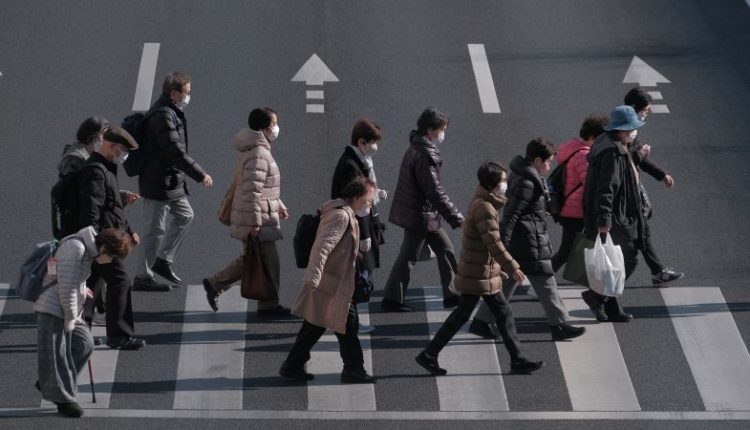The world’s population is getting older in what the United Nations calls an “irreversible global trend,” driven by longer lives and smaller families.
The number of people aged 65 and older is expected to more than double to 1.6 billion globally by 2050, according to a UN report published last year.
In Japan, this change is threatening one of the world’s largest economies as the percentage of older people grows and fewer couples have children.
In early June, the country said the number of babies born fell for the eighth straight year, hitting a record low of 727,277 births in 2023 since Japan started compiling data more than 120 years ago.
A few months earlier, Japan said that one in 10 people were aged 80 or older, making it the oldest country in the world. Last year, almost 30% of the Japanese population was 65 or older.
In June 2023, Japanese Prime Minister Fumio Kishida unveiled a multi-billion dollar package of measures to encourage families to have more children. Japan is trying to tackle a demographic crisis that could impact pension funding and health care as the workforce shrinks and demand from the aging population surges.
The growth of the older population is also changing the consumer product market.
Demand for adult diapers in Japan has been rising, while the need for baby diapers has fallen.
The global market value for adult diapers was pegged at $12.8 billion in 2023, according to market research provider Euromonitor International. It is expected to reach almost $15.5 billion by 2026. In Japan, the adult diaper market stood at $1.7 billion in 2023, and is expected to grow to $1.9 billion in 2026, accounting for more than 12% of the global total.
One example of a company adjusting to this shift is Japanese manufacturer Oji Holdings, which announced in March it would stop producing baby diapers for the Japanese market later this year to focus on incontinence products for adults.
The company will continue to run its overseas baby diaper business, it said. Their combined baby diaper sales in China, Indonesia and Malaysia have grown despite a slowdown in the domestic market, where the company sold 7.3% more diapers for adults than babies in 2023.
Other Japanese companies have already been adjusting to this shift. Electronics giant Panasonic has been researching and developing products aimed at the older population since 1990, according to its website.
Kitchen appliance manufacturer Zojirushi is offering product features aimed at senior citizens, such as electric teapots that send an email to a registered address when in use so relatives can keep up with the activities of their elderly family members.
Japan isn’t the only place in Asia grappling with aging. South Korea, which has the world’s lowest fertility rate, reported a new low of 0.72 babies per woman in 2023, down from 0.78 in 2022. The government is so concerned it has set up a new agency: the Ministry of Low Birth Rate Counter-Planning. Births are also falling in Hong Kong, China, and Taiwan.
According to the UN, six Asian countries or territories will place in the top 10 for the largest share of people age 65 or older in 2050, with Hong Kong leading the list. By 2100, Africa is expected to be the only region where senior citizens represent less than 15% of the population. Seniors in Europe, Northern America and Latin America and the Caribbean will likely surpass the 30% threshold by then, according to the UN’s forecast.
Although Europe and Northern America now have the highest share of older citizens, Northern Africa, Western Asia and sub-Saharan Africa are expected to experience the fastest growth in the number of older people in the next 30 years.
Read the full article here

